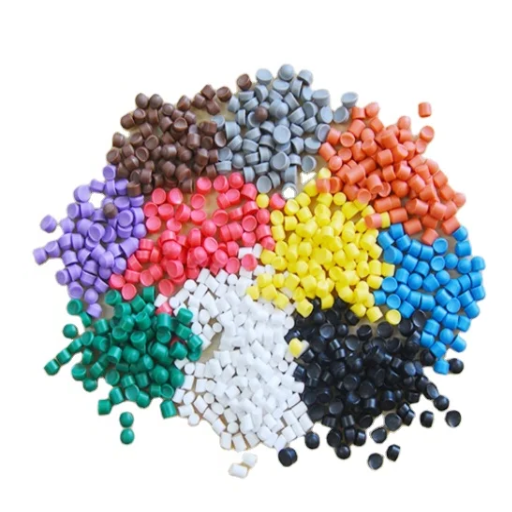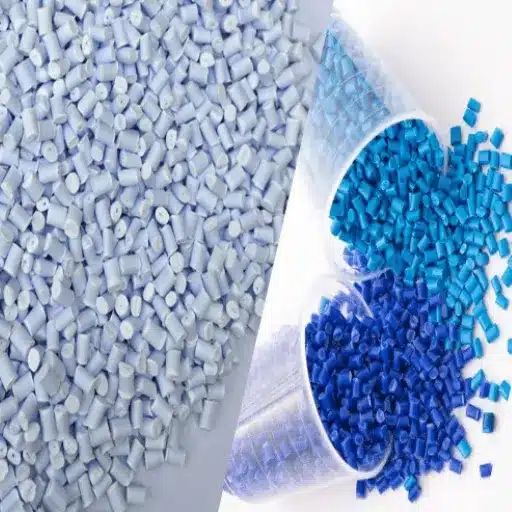Choosing the right plastic pellet distributor for your business is crucial; it can significantly impact the efficiency and success of your projects in injection molding or extrusion. The abundance of suppliers available, ranging from local distributors to international suppliers, can further complicate the decision-making process. This guide aims to make the selection process easier by providing actionable tips on how to find a distributor that will meet your unique needs, offer a material of consistently high quality, and support your production goals. This article will provide valuable insights into making an informed decision that boosts your business growth, whether you are seeking expertise in specialty resins, competitive pricing, or on-time delivery. Continue reading as we highlight key considerations, industry best practices, and expert tips to help you make a quick and informed decision.
Understanding Plastic Pellets and Their Importance
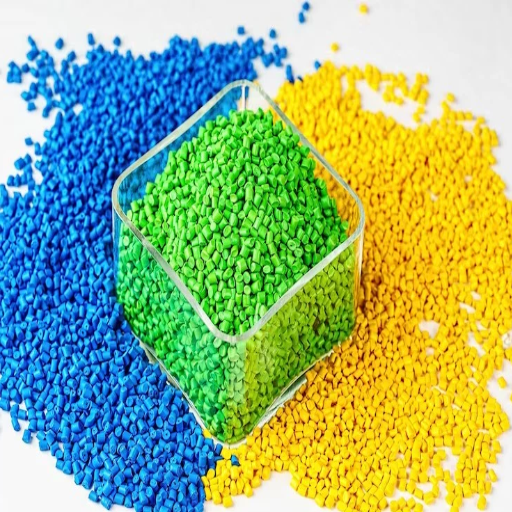
What Are Plastic Pellets?
Those plastic pellets, also referred to as resin pellets or nurdles, are small, bead-like materials that serve as the starting point for numerous plastic products. The raw materials are formed commonly through polymerization processes and are used in industries ranging from packaging and construction through automotive to consumer goods. These plastic pellets vary in types; main four types being polyethylene (PE), polypropylene (PP), polystyrene (PS), and polyvinyl chloride (PVC), offering several attributes that best suit durability, flexibility, or chemical resistance.
Market Growth Insight: According to the latest data, the global plastic resin market is expected to experience significant growth over the next decade. Packaging and sustainability are the major sectors in its demand. Innovations involving bio-based and recycled plastic pellets are addressing sustainability issues, enabling manufacturers to minimize environmental impacts while meeting regulatory standards. By examining the types, applications, and trends of plastic pellets, companies can make informed strategic decisions that enable them to optimize their manufacturing processes in line with industry trends.
Types of Plastic Pellets Used in Industry
Plastic pellets are the raw material used in various manufacturing processes across industries, and their composition and characteristics vary based on application requirements. Below are the major classifications of plastic pellets used:
Polyethylene (PE) Pellets:
Polyethylene is one of the most widely used plastic materials, with varieties in HDPE and LDPE. HDPE pellets are used in packaging, piping, and bottle production, primarily for their strength and their resistance to chemical action. In contrast, LDPE pellets are used for flexible applications like plastic bags and shrink wraps due to their high flexibility and low melting points.
Polypropylene (PP) Pellets:
These pellets being lightweight and resistant to heat are highly considered for automobile parts, consumer-grade containers, textile, and medical tools. Their ability to inhibit breaking when repeatedly flexed makes them versatile, as does the fact that they do not absorb water easily.
Polystyrene (PS) Pellets:
Polystyrene pellets are manufactured either as rigid or foam and their applications vary accordingly. Rigid PS is suitable in electronics casings, CD/DVD cases, and kitchenware, whereas EPS pellets become the component of lightweight insulated materials such as foam packaging and thermal insulators.
Polyvinyl Chloride (PVC) Pellets:
PVC pellets are characterized by strong chemical stability and resistance to environmental attack. They are used in materials for construction, such as pipes, flooring, and window frames, in synthetic leather, credit cards, and in medical tubing.
Bioplastic Pellets:
In the age of sustainability and green industries, bioplastic pellets have become the recipient of much attention. Being bioplastics, they are made from raw materials such as corn starch or sugarcane, and can be tailored to almost any property, from rigid and strong to fully biodegradable, making them perfect for packaging, disposable cutlery, and medical applications requiring environmental concerns.
Recycled Plastic Pellets:
The recycled plastic pellet is considered an eco-friendly alternative to virgin material. Produced from post-consumer or post-industrial plastic wastes, these pellets are environmentally safer and save huge amounts of carbon emission in their making. Industries opt for these recycled pellets under various contexts where eco-friendly production is emphasized, especially packaging, textiles, and automotive parts.
Acrylic Pellets:
Being optically clear, weather-proof, and highly durable, acrylic pellets find wide use in display cases, signage, automotive light covers, and safety shields.
Current Market Trends: Trending current sustainability and performance optimization are. The emergence of bio-derived and recycled pellets is reshaping corporate approaches in production, with stringent environmental laws. Meanwhile, material science advancements are far more interesting in creating high-performance variants of pellets that have enhanced characteristics such as UV resistance, tensile strength, or thermal stability. Industries with a knowledge of these trends can work on improving efficiency while making their productions more ecological and align themselves with the customers’ changing expectations.
Applications of Plastic Resin Pellets
Plastic resin pellets are used in various industries due to their versatility and adaptability, making them a key component of plastic grades. In the packaging industry, they are extensively used, as the very lightweight and durable plastic resins are best suited for manufacturing bottles, containers, and films. Also, in the automotive sector, resin plastic pellets find application in interior parts, exterior panels, and lightweight structural components, which are beneficial in terms of fuel economy and performance.
In the construction field, they are used for the production of piping systems, insulation, and other fixtures requiring durability and weather resistance. Similarly, in the healthcare field, plastic resin pellets are crucial for producing medical-grade products, including syringes, IV bags, and sterile equipment packaging, that meet stringent hygienic standards.
To provide for improved and wider applications, bio-based resins and resins with high-performance pellets give greater sustainability and functionality. Because of these advancements, electronics applications can engineer components that are of the least weight and capable of withstanding tough situations. Plastic resin pellets are of prime significance for design engineering, be it for homeware or aerospace technology, thereby ensuring mass production efficiencies while again addressing stricter regulations and environmental standards.
Key Factors to Consider When Choosing Plastic Pellet Distributors

Quality and Type of Plastic Resin
The quality and type of plastic resin are the most critical considerations for distributors of plastic pellets since they affect the performance and final use of any product. High-grade resins have consistent material properties of tensile strength, durability, and heat resistance used during products’ specification in different industries such as automotive, electronics, and packaging.
The different types of plastic resins are made to serve different purposes. Polyethylene is popular for its general-use nature and chemical resistance; polycarbonate, on the other hand, offers excellent impact resistance combined with transparency. Advanced plastics, such as bioplastics, have come to be celebrated for their sustainable nature and have thus entered mainstream markets in recent times, amid tighter environmental regulations and consumer demand for eco-friendly products.
Quality Assurance Tip: Additionally, one can observe the certification or standard a distributor adheres to. The distributor could be an ISO-certified entity or one that complies with industry-specific standards. In such ways, every stone is turned to assure the resins are of consistent quality. For those targeting specialized applications, they will need to understand the resin’s grade, melting point, and compatibility with additives so that the implementation can be the best and the execution can meet the pace.
Availability of Different Plastic Pellets
The plastic pellets available today are far greater in number to meet industrial requirements, providing a wide range of types for various applications. The most common varieties available include polyethylene (PE), polypropylene (PP), polystyrene (PS), and polyvinyl chloride (PVC) pellets, which are made for operations like injection molding, extrusion, or blow molding. Engineering-grade pellets, such as acrylonitrile butadiene styrene (ABS), polycarbonates (PC), or nylon, are finding their way into more high-performance applications in automotive, electronics, and construction sectors.
Biodegradable and recycled plastic pellets have seen a rise in production and distribution with demand for sustainable alternatives. Materials such as PLA pellets or PCR polyethylene pellets are now readily available, enabling manufacturers to minimize their carbon emissions and operate in a manner that is both profitable and sustainable. Moreover, distributors provide formulations that are customized for pellets, including additives, pigments, or reinforcements, which enable companies to tailor product properties such as tensile strength, UV resistance, or thermal resistance. The mature supply chain network and online portals have streamlined the plastic pellets sourcing process, allowing producers to source material grades and quantities in response to changing market requirements.
Pricing and Supply Chain Reliability
Several factors influence the prices of plastic pellets, including the availability of raw materials, production costs, and global market dynamics. Recent trends indicate an increase in demand for sustainable and specialty polymers, resulting in price fluctuations for their various industrial applications. Manufacturers have been adopting cost-effective procurement strategies to mitigate these issues by entering into long-term contracts or making bulk purchases.
Supply chain reliability has become a growing concern, primarily due to the increasing complexity of global logistics networks and external disruptions, such as geopolitical tensions and raw material shortages. The risk, therefore, is mitigated by companies through diversifying suppliers, keeping higher inventory buffers, and tracking delivery schedules with the help of the latest tracking technologies. This enables them to negotiate favorable prices and avoid production stoppages, adapting to rapid market changes and staying ahead of shifts in consumer demand.
Popular Types of Plastic Resins and Their Applications
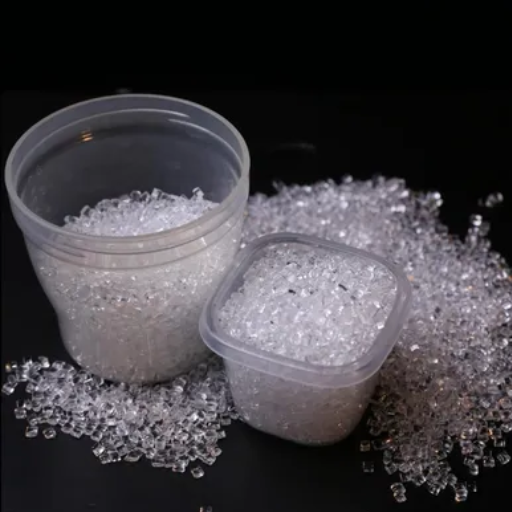
Polypropylene (PP) and its uses
Polypropylene is a multipurpose thermoplastic polymer used in various industries depending on its multitude of properties. It finds purchase in the products where strength, chemical resistance, and lesser price are essential: packaging, automotive components, and several others. Being lightweight with a moderately high tensile strength, PP is used for products such as food containers, syringes, battery cases for cars, and textiles. It remains resistant to moisture, is flexible on repeated use, and can be recycled, thereby making it an environmentally friendly material for various products. Further optimization of performance in manufacturing processes has led to fine-tuned solutions for industries such as medical, construction, and consumer products. All these factors have made PP one of the most widely used and sustainable polymer materials in the whole world.
Making the Best of High-Density Polyethylene (HDPE)
Now, the English term of this name is High-Density-Polyethylene or HDPE. This is a polymer thermoplastic that, fairly considered, is very strong in terms of its strength-to-density ratio, making it highly versatile and suitable for various manufacturing applications. With properties such as chemical resistance, rigidity, and impact resistance, this material is used in diverse applications such as packaging, piping, and automotive. Application-wise, HDPE must be lightweight and weather-resistant to maintain structural integrity even when subjected to extreme environmental conditions over an extended period.
Technologically evolved over the years to facilitate the creation of grades having proprietary features viz., increased tensile strength or flexibility to suit industrial requirements. In the packaging industry, HDPE creates lightweight recyclables that reduce material wastage and transportation costs. Product features, such as low moisture absorption capacity and good chemical resistance, further tend to favor HDPE in holding containers for liquids and industrial pipes.
In the environmental arena, HDPE’s recyclability is a contributing factor to its sustainability appeal. As a result, many manufacturers tend to incorporate recycled HDPE extensively in their production to reduce dependence on virgin resins, thereby improving their environmental consciousness. This trend is also in tandem with global inclination toward creating circular economies to lessen plastic waste, hence pushing HDPE into being an imprint polymer.
Engineering Grade Plastics: Nylon and Acetal
Nylon and Acetal are heralded as key engineering-grade plastics, their flexibility and performance desired across various industries. Possessing qualities such as strength, durability, and abrasion resistance, Nylon finds usage in wheels for gears, bearings, and even structural parts. The wear resistance and the ability of Nylon to carry heavy loads make it an attractive choice for mechanical parts subjected to stress or friction. Moreover, Nylon can withstand temperature variations well, further qualifying its suitability for harsh environments.
Acetal- also known as polyoxymethylene or POM- is an engineering polymer considered for its excellent dimensional stability, low friction, and extreme stiffness. It is a material resistant to moisture absorption and hence finds application in precision engineering or environments with high humidity. It is being used in various products in industries such as automotive, electronics, and food processing, where it is beneficial in parts such as gears, fasteners, and conveyor components because of its low wear and smooth operation. Chemical resistance and machinability are additional advantages that make Acetal a material of choice for high-performance applications.
Both Nylon and Acetal stand on the forefront of modern manufacturing technology, providing reliable and sustainable solutions in accordance with the complex demands of different industries. With polymer technology continually evolving, these engineering plastics push design and function beyond their limits.
Exploring Advanced Thermoplastics and Their Distributors
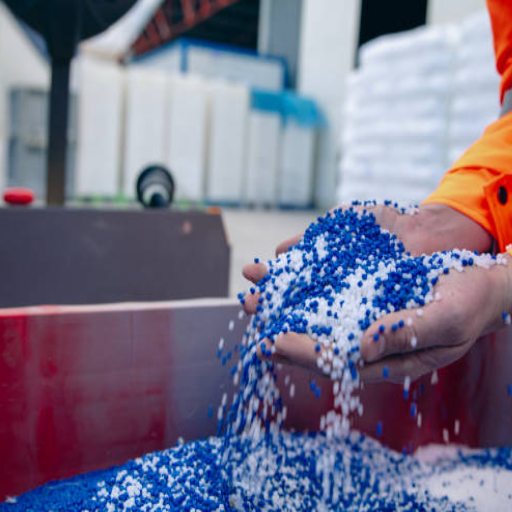
Understanding Thermoplastic Elastomers (TPE)
Thermoplastic Elastomers offer a unique combination of rubber’s properties, namely elasticity, while thermoplastics provide processability and recyclability. They have a dual nature because these materials have a constitution that includes hard thermoplastic-type segments alongside soft elastomeric-type segments, thereby making the material both flexible and strong, as well as versatile. Because of these properties, TPEs are widely used across industries like automotive, medical, consumer goods, and electronics.
For example, in the automotive industry, TPEs are utilized for sealing systems, gaskets, and interior components due to their resistance to extreme temperatures and wear. In the medical field, they provide safe and biocompatible solutions for syringe plungers, seals, and tubing. Another significant selling point for TPEs has been their sustainability, as they can be melted, reshaped, and recycled, unlike traditional rubber materials.
Recent developments in formulations aim to enhance the performance of TPEs for specific applications. This includes improving UV resistance, chemical resistance, and strength in order for TPEs to tackle harsher environments. The growing body of bio-based TPEs also demonstrates the driving force of the industry toward greener directions, while material science focuses on both the needs of performance and sustainability.
Polyetheretherketone (PEEK) and Its Advantages
Polyetheretherketone (PEEK) is a high-performance engineering thermoplastic renowned for its exceptional mechanical and chemical properties. Its high resistance to heat and wear, continuous service in environments up to 260°C (500°F) would be so very attractive to demanding applications in aerospace, automotive, and medical device industries. Its chemical inertness provides the material with additional benefit to be compatible with aggressive substances like hydrocarbons, acids, and bases without degradation through time.
Further developments and fabrication methods for PEEK in high-end manufacturing have also been done using 3D printing for precision components. Instances would be that PEEK is informational for aerospace applications for their light yet rigid structures to reduce weight while retaining strength; conversely, it may be ideal for a biocompatible medical implant such as spinal cages or dental crowns in which strength and resistance to biofluids are of concern.
PEEK also is known to have an excellent strength-to-weight ratio alongside remarkable insulation qualities to ensure electrical stability in adverse working environments. Due to its ability to substitute metal part,s thus making high-performance systems cheaper to maintain while energy-efficient, the growth of PEEK use in demanding sectors has been said to be fast. These advantages make PEEK an important building block for technology and sustainability in all fronts.
Thermoplastic Polyolefin (TPO) in Modern Applications
Thermoplastic Polyolefin (TPO) has become a crucial material in numerous fields and industries due to the qualities it has: durability, flexibility, and recyclability. TPO is a mixture of polypropylene and ethylene-propylene rubber, which gives it the flexibility of rubber combined with the processability of plastics. TPO is used in roofing, automotive, and construction fields alike and has gained acclaim for its weather resistance, UV stability, and capacity to withstand extreme temperatures. For instance, these days, demand for TPO from the roofing sector has increased dramatically because of its energy efficiency that prevents heat absorption and favors green building design initiatives. Likewise, in the automotive industry, TPOs have been used mainly for automotive bumpers and interior trims, serving as substitutes for traditional materials to reduce vehicle weight and boost fuel efficiency. Moreover, with sustainability gaining traction, TPO stands right in the limelight who are consciously looking to reduce impact on the environment while not compromising on the standards of performance. This versatile polymer is indeed a cry to innovation and sustainability, cutting across application domains.
Conclusion: Making the Right Choice in Plastic Pellet Distributors

Recap of Key Considerations
Each of my choices is based on several key considerations that ensure the best outcome for my production needs. First and foremost is the ability of distributors to consistently provide quality materials. The quality of plastic pellets significantly affects how well the finished product performs, how long it lasts, and how well it can be sustained. Therefore, working with a trusted supplier that upholds stringent quality standards is essential. I also look for those with technical knowledge and support so that I can ask professional colleagues about an issue or get recommendations on a solution that suits my application.
Another huge thing in the way: the item being bought, anything from a supplier, etc., how very reliable the supply chain is. To avoid halting production, one should focus on the challenging output: timely delivery. Any distributor with a big logistics system and a history of on-time delivery is preferred. Sustainability then becomes a key consideration. I select distributors who offer the best eco-conscious materials, such as recyclable or lightweight materials like Thermoplastic Olefins (TPO), in support of environmental goals without compromising performance.
Lastly, I find that innovation and flexibility set a distributor apart. It is due to the discovery of new solutions that the distributors comprise and commercialize relatively advanced products, which keeps me in the race. From offering TPO for lightweighting in the automotive industry through allowing designers to discover really innovative and sustainable solutions, all these aspects lead me to confident, informed choices concerning my plastic pellet distributor.
Trends in Future Plastic Resin Distribution
In my opinion, the future in the plastic resin distribution industry has sustainability, digital innovations, and supply chain resilience as main drivers. With environmental concerns mounting and strict regulations being implemented, distributors will be inclined to provide green resin options, such as bioplastics and recycled types, to meet the increasing demand for sustainable solutions. Those companies that develop resources around these substances and promote circular economy initiatives will distinguish themselves as leaders within the industry.
One of the other crucial trends I can see will be digital transformation. With the help of advanced digital tools such as AI-powered analytics or real-time inventory tracking, we may streamline operations and provide better customer experiences. A strong digital platform can empower me and fellow clients to place orders easily, alongside having access to product information and shipment tracking. Furthermore, the platform may provide invaluable data that can optimize production schedules and forecast market trends.
Lastly, creating resilient and flexible supply chains will go a long way in addressing challenges that have never been seen before, ranging from global disruptions to raw material shortages. Distributors that value transparency and offer diverse sourcing options alongside solid partnerships will ensure that materials reach them regularly. These are some of the trends that, if given attention, are sure to see the plastic resin distribution industry evolve not only to cater to my needs but also meet the ever-changing demands of a fast-paced market.
Final Thoughts on Choosing the Best Distributor
When dealing with the entire process of selecting the best distributor, my emphasis was on finding a provider with a genuine understanding of my business’s unique needs and who consistently performs to high standards. I view distributors worthy of my respect and admiration as those who are transparent, engaging in extraordinary communication, and open to changing with the times. To me, a reliable distributor is a strategic partner who anticipates obstacles, addresses issues proactively, and efficiently manages supply chain operations.
Additionally, I emphasized distributors who pursue multiple sourcing strategies and sustainable practices. These attributes increase resilience to market disruptions while keeping pace with emerging trends in responsible business practices; from raw material shortages to rigid consumer demands, I require a distributor capable of fostering innovation and adaptability in our partnership.
Ultimately, I made the decision to choose a distributor based on respect, reliability, and future-oriented solutions. With such a partner, I believe my attention will be focused on the business’s expansion, while I am necessarily adept at navigating the ever-changing landscape. In the competitive times, it is this strategic alignment that gives birth to success.
Reference Sources
-
Best Distributor of Plastic Pellets – PrimaPlas
Highlights quality standards, consistent pellet size, purity, and performance. -
The Top Polycarbonate Pellets Suppliers – Gon Plastics
Offers guidance on selecting the most suitable polycarbonate pellet suppliers. -
Ultimate Guide: Choosing the Best Engineering Plastics – TopOneW
Explores key factors to consider when selecting reliable suppliers for engineering plastics. -
Top Plastic Pelletiser Manufacturers in the World – Wintech
Offers an in-depth comparison of plastic pelletizer manufacturers and buying strategies. - View Plastic Pellets Manufacturers in China

